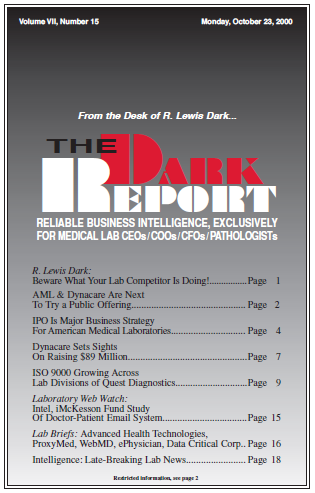CEO SUMMARY: Since its acquisition in 1997, American Medical Laboratories’ fast growth was funded by heavy borrowing. Now this Virginia-based lab company needs to raise additional capital so it can restructure its debt and lay a foundation for the next cycle of growth. Its initial public offering of common stock will need to compete with …
IPO Is Major Strategy For American Med Labs Read More »
To access this post, you must purchase The Dark Report.


